Non-Toxic Positivity For People with Myalgic Encephalomyelitis
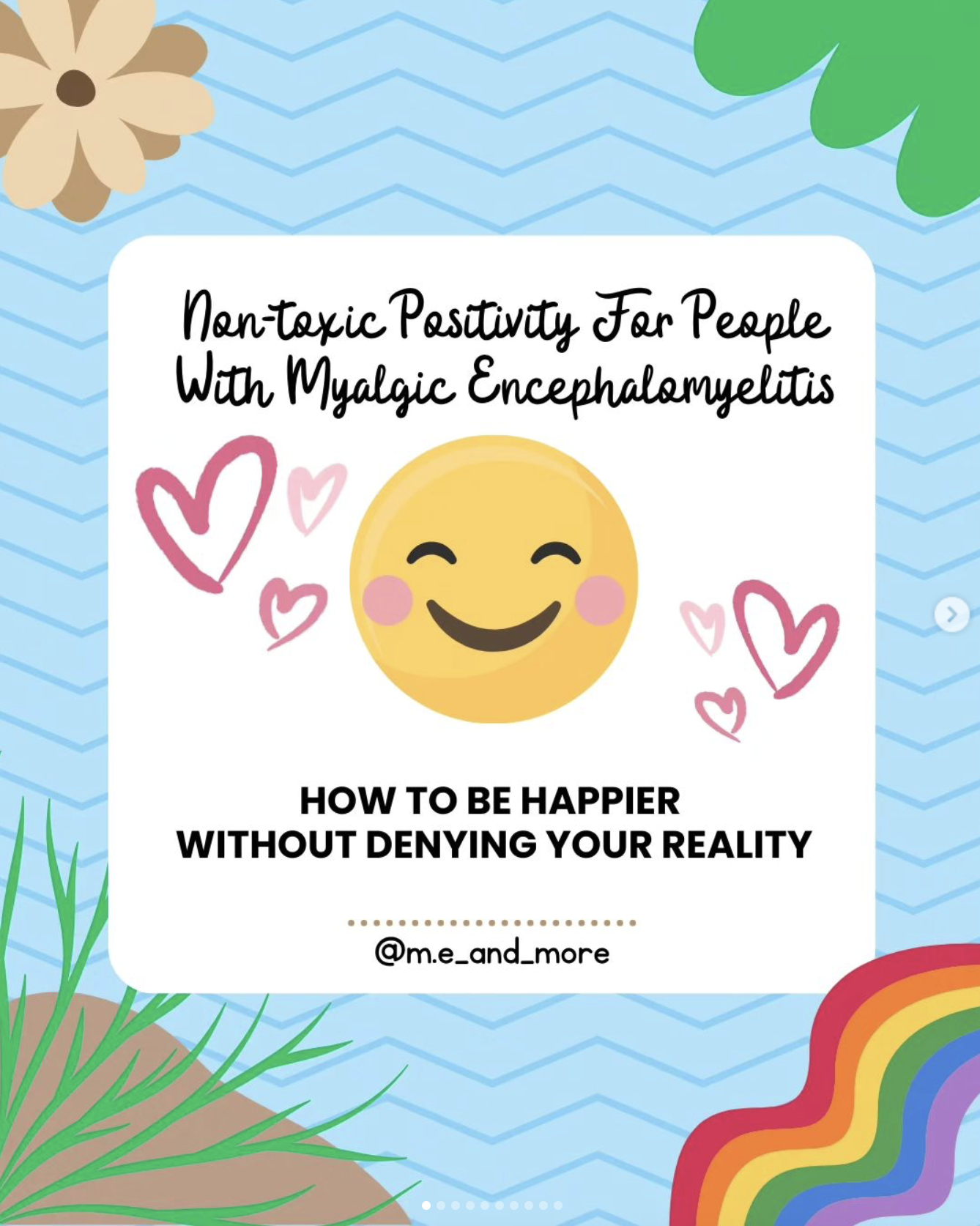
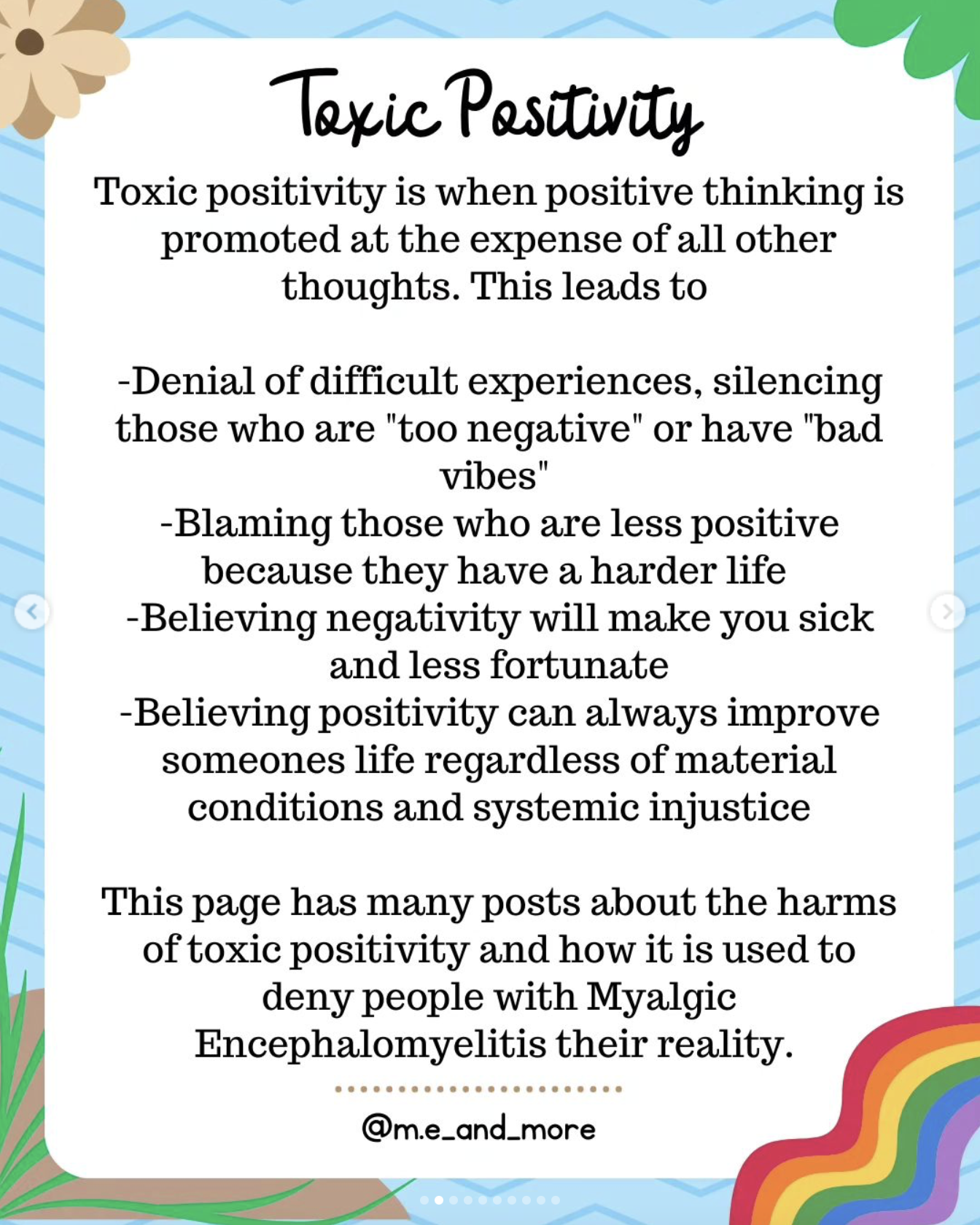
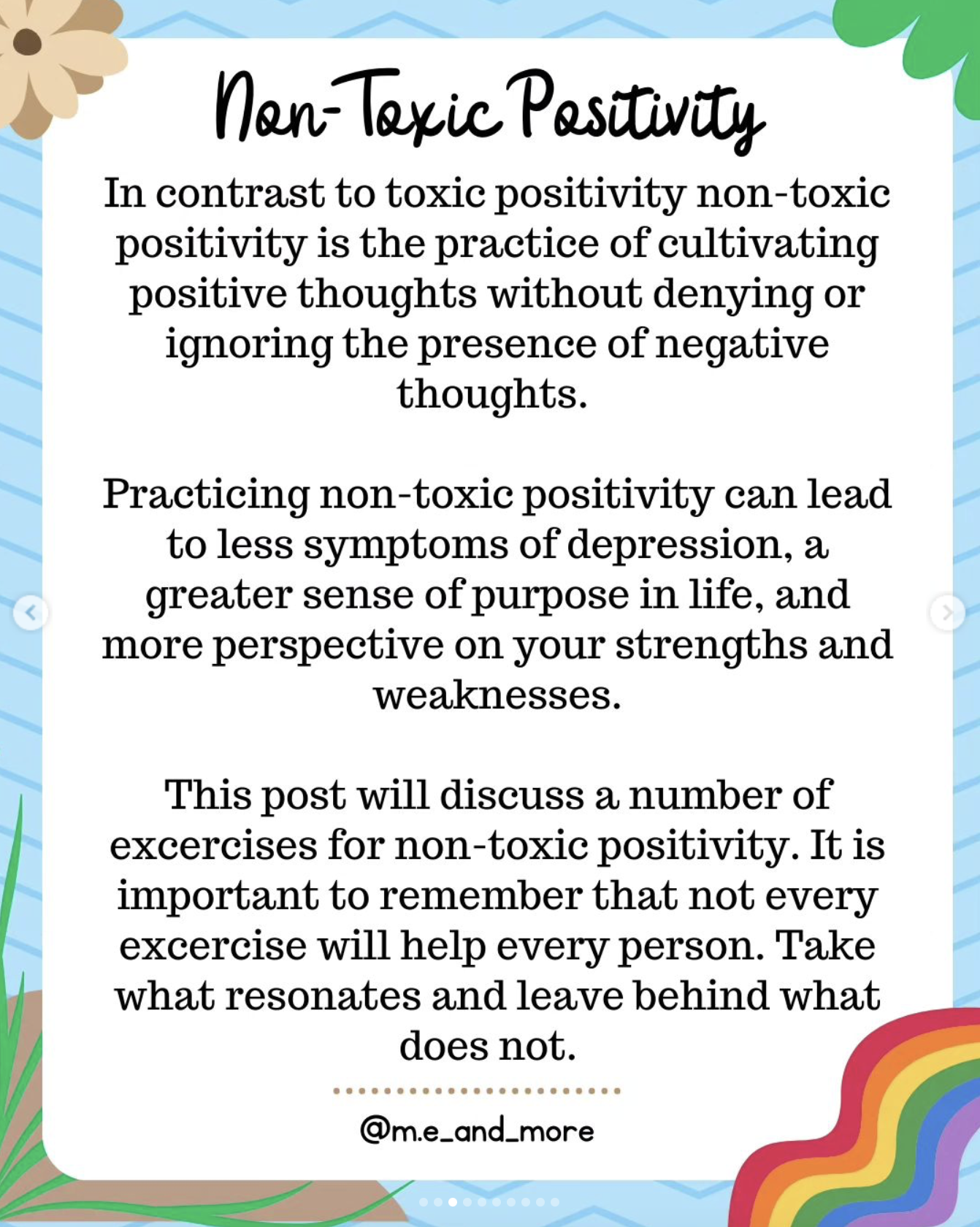
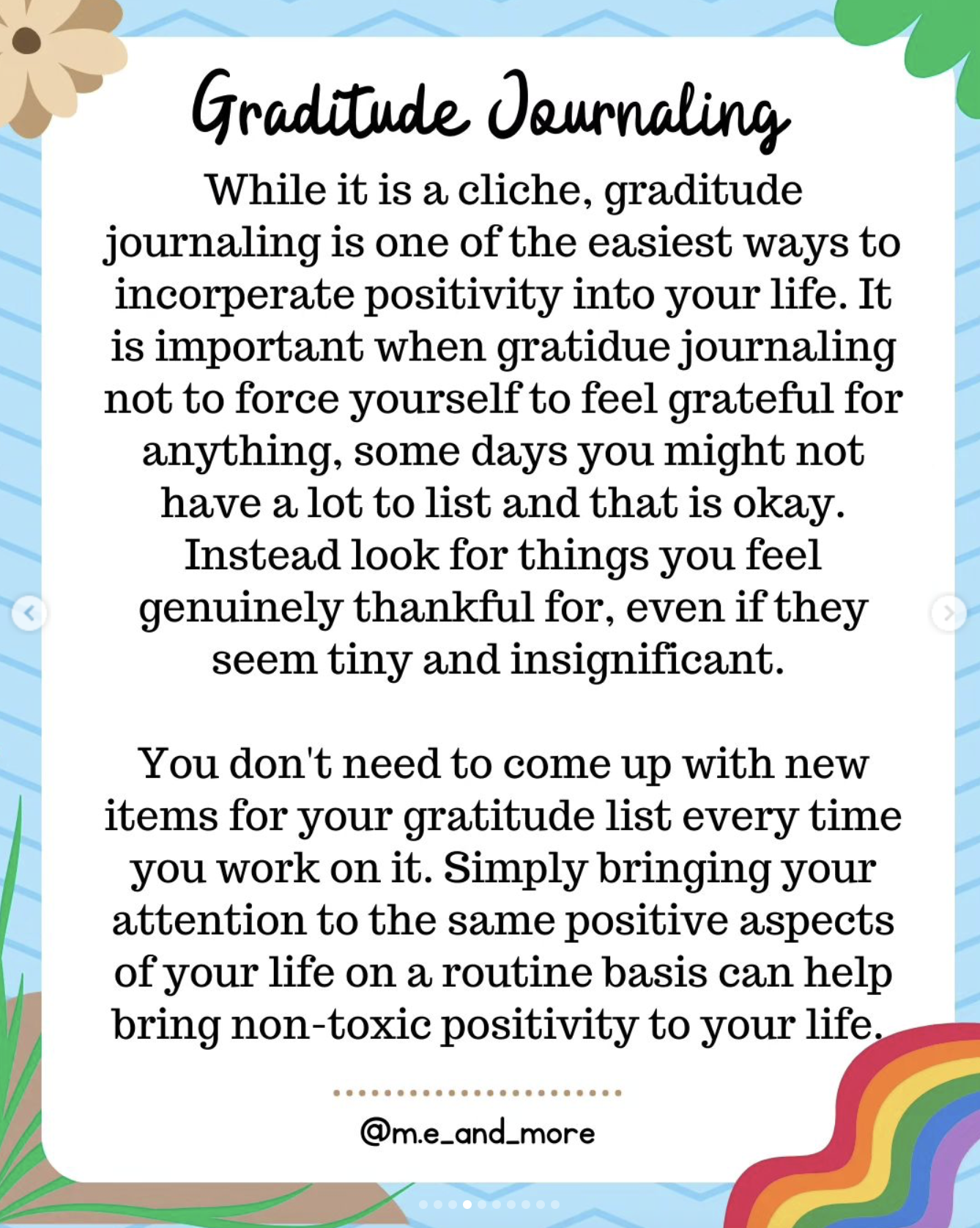
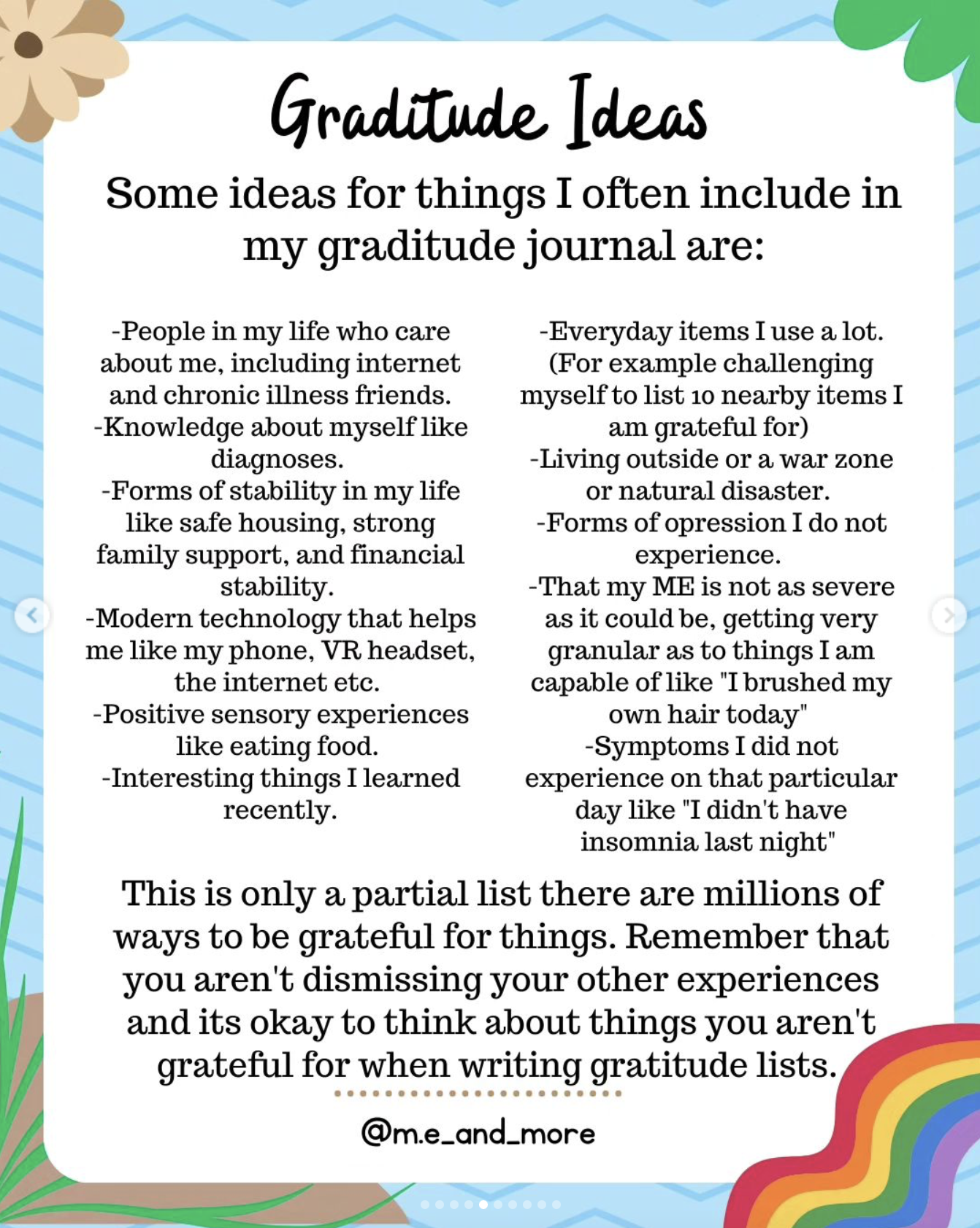

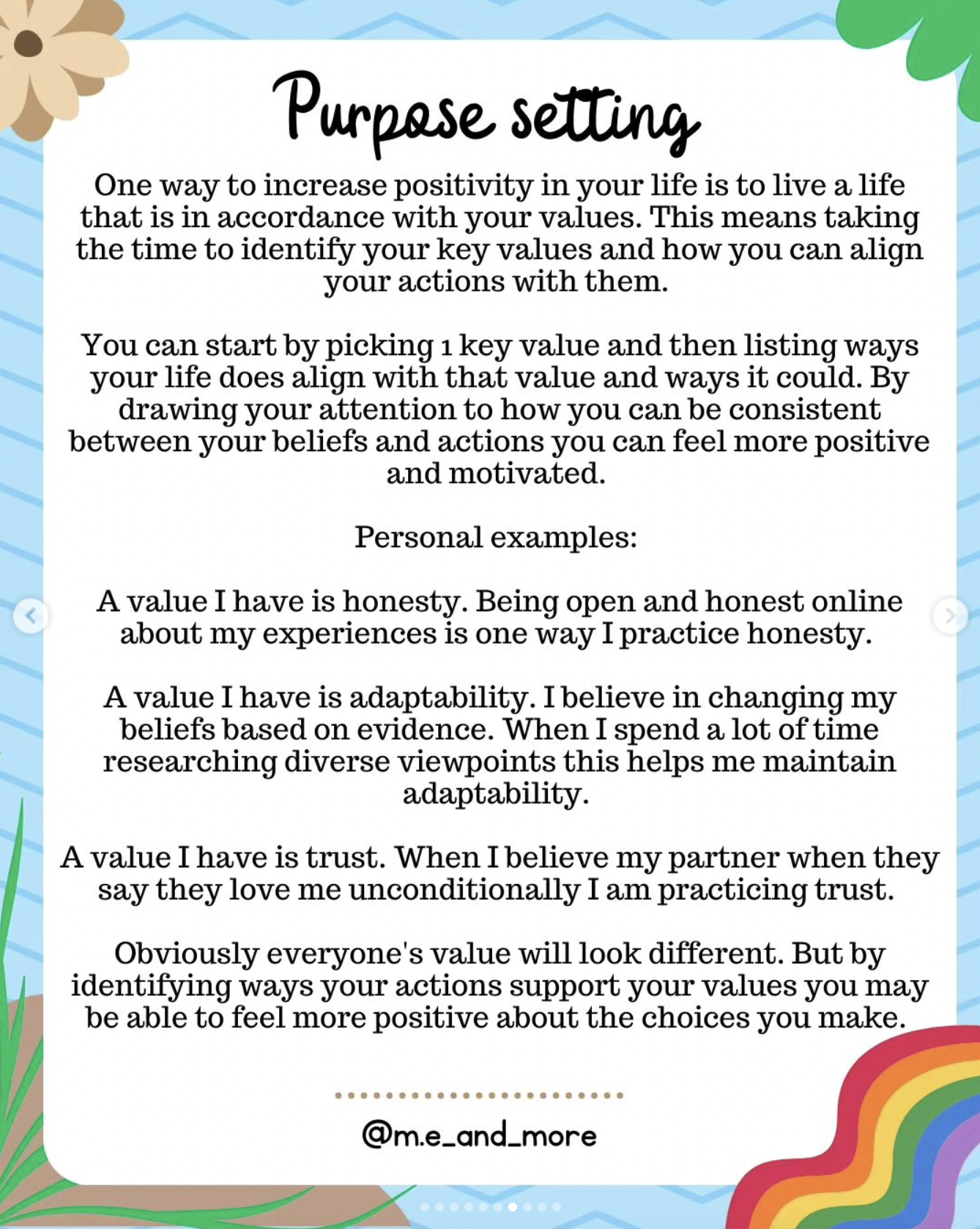
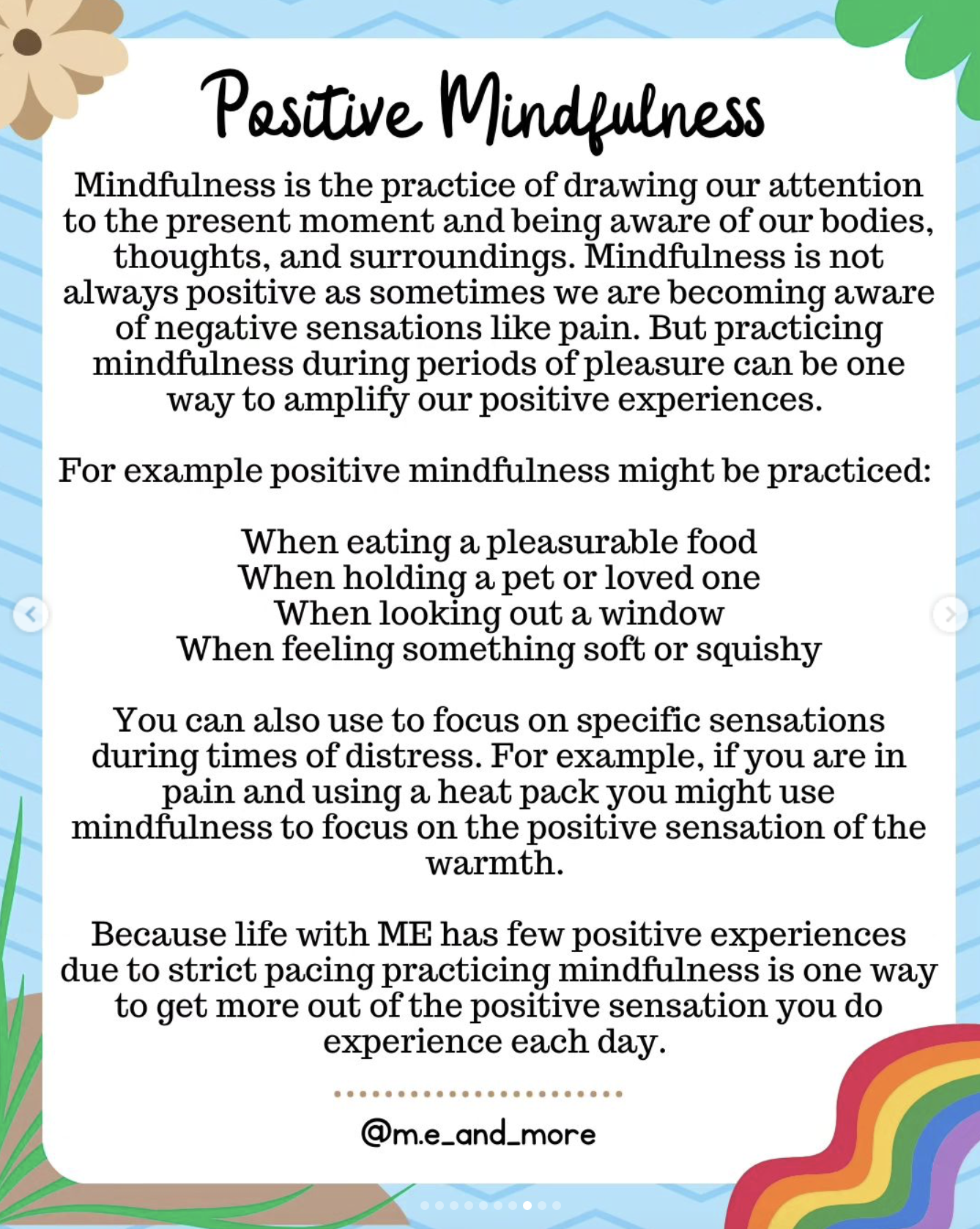
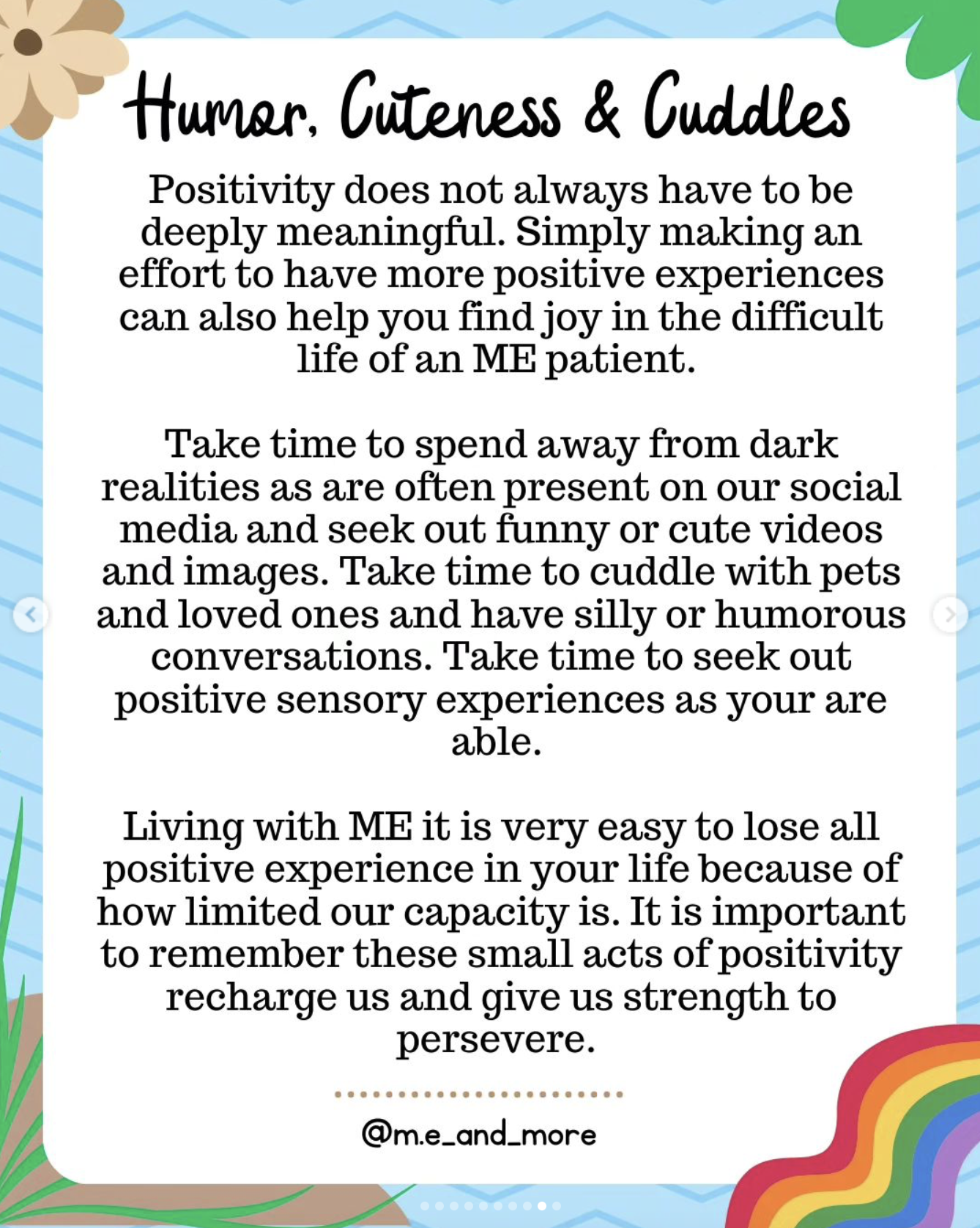

How to be happier without denying your reality
—-
Toxic Positivity
Toxic positivity is when positive thinking is promoted at the expense of all other thoughts. This leads to
- Denial of difficult experiences, silencing those who are “too negative” or have “bad vibes”
-Blaming those who are less positive because they have a harder life
-Believing negativity will make you sick and less fortunate
-Believing positivity can always improve someone’s life regardless of material conditions and systemic injustice
This page has many posts about the harms of toxic positivity and how it is used to deny people with Myalgic Encephalomyelitis their reality.
—-
Non-Toxic Positivity
In contrast to toxic positivity, non-toxic positivity is the practice of cultivating positive thoughts without denying or ignoring the presence of negative thoughts.
Practicing non-toxic positivity can lead to less symptoms of depression, a greater sense of purpose in life, and more perspective on your strengths and weaknesses.
This post will discuss a number of exercises for non-positivity. It is important to remember that not every exercise will help every person. Take what resonates and leave behind what does not.
—-
Gratitude Journaling
While it is a cliche, gratitude journaling is one of the easiest ways to incorporate positivity into your life. It is important when gratitude journaling not to force yourself to feel grateful for anything, some days you might not have a lot to list and that is okay. Instead look for things you feel genuinely thankful for, even if they seem tiny and insignificant.
You don’t need to come up with new items for your gratitude list every time you work on it. Simply bringing your attention to the same positive aspects of your life on a routine basis can help bring non-toxic positivity to your life.
—-
Gratitude Ideas
Some ideas for things I often include in my gratitude journal are:
-People in my life who care about me, including internet and chronic illness friends.
-Knowledge about myself like diagnosis.
-Forms of stability in my life like safe housing, strong family support, and financial stability.
-Modern technology that helps me like my phone, VR headset, the internet etc.
-Positive sensory experiences like eating food.
-Interesting things I learned recently.
-Everyday items I use a lot. (For example, challenging myself to list 10 nearby items I am grateful for)
-Living outside or a war zone or natural disaster.
-Forms of oppression I do not experience.
-That my ME is not as severe as it could be, getting very granular as to things I am capable of like “I brushed my own hair today”
-Symptoms I did not experience on that particular day like “I didn’t have insomnia last night”
This is only a partial list there a re millions of ways to be grateful for things. Remember that you aren’t dismissing your other experiences and its okay to think about things you aren’t grateful for when writing gratitude lists.
—-
Affirmations
Affirmations can be another way of drawing your attention to positive aspects of your life as well as focusing on ways you are in alignment with your life purpose. Some examples of affirmations I use are:
-My value is not my productivity.
-My body sustains me.
-I deserve love and care.
-My disability is not my fault.
-I am unique.
-I did my best today.
-I am always learning.
-I am honest/kind/beautiful/compassionate/funny/generous etc.
-Accepting my illness isn’t giving up.
-My survival is an act of resistance.
—-
Purpose Setting
One way to increase positivity in your life is to live a life that is i accordance with your values. This means taking the time to identify your key values and how you can align your actions with them.
You can start by picking 1 key value and then listing ways your life does align with that value and ways it could. By drawing your attention to how you can align your actions with them.
You can start by picking 1 key value and then listing ways your life does align with that value and ways it could. By drawing your attention to how you can be consitent between your beliefs and actions you can feel more positive and motivated.
Personal examples:
A value I have is honesy. Being open and hones online about my experiences is one way I practice honest.
A value I have is honesty. Being open and honest online about my experiences is one way I practice honesty.
A value I have is adaptability. I believe in changing my beliefs based on evidence. When I spend a lot of time researching diverse viewpoints this helps me maintain adaptability.
A value I have is trust. When I believe my partner when they say they love me unconditionally I am practicing trust.
Obviously, everyone’s value will look different. But by identifying ways your actions support your values may be able to feel more positive about the choices you make.
—-
Positive Mindfulness
Mindfulness is the practice of drawing our attention to the present moment and being aware of our bodies, thoughts, and surroundings. Mindfylness is not always positive as sometimes we are becoming aware of negative sensations like pain. But practicing mindfulness during periods of pleasure can be one way to amplify our positive experiences.
For example, ppsotive mindfulness might be practiced:
When eating a pleasurable food
When holding a pet or loved one
When looking out a window
When feeling something soft or squishy
You can also use to focus on specific sensations during times of distress. For example, if you are in pain and using a heat pack you might use mindfulness to focus on the positive sensation of the warmth.
Because life with ME has few positive experiences due to strict pacing practicing mindfulness is one way to get more out of the positive sensation you do experience each day.
—-
Humor, Cuteness and Cuddles
Positivity does not always have to be deeply meaningful. Simply making an effort to have more positive experiences can also help you find joy in the difficult life of an ME patient.
Take time to spend away from dark realities as are often present on our social media and seek out funny or cute videos and images. Take time to cuddle with pets and loved ones and have silly ot humorous conversations. Take time to seek out positive sensory experiences as you’re able.
Living with ME it is very easy to lose all positive experience in your life because of how limited our capacity is. It is important to remember these small acts of positivity recharge us and give us strength to persevere.
—-
Faith and Positive Visualizations
Forthose who believe in God or a higher power, faith can be a great source of positivity by providing both comfort and a source of purpose and meaning.
However, even without religion, faith can be a strong positive motivator. Faith in humanity and a focus on the powerful ways we sit in community with each other can be inspiring. Faith that something better (i.e. a cure/treatment) is coming.
Additionally, positive visualizations about what the future could hold can also be a powerful motivator. Visualization can be personal, such as imagining the things you would do if you were better, or related to the broken world we live in, such as imagining a future where disabled needs are met by default and we care fo each other communally.
Not only is visualization a powerful personal tool it is also a tool for changing our material conditions. Because we can only build a better world if we can imaging it first.
—-
The holidays can be a time that is difficult for the mental health of pwME. There is immense pressure to live up to toxic positivity, especially for those of us with chronic illness, chronic pain and chronic fatigue. I have spoken many times on this page about the dangers of toxic positivity (when we promote positive thinking and deny ourselves all other feelings like chronic illness grief and pain).
⠀
But just because toxic positivity is indeed toxic does not mean there is not value to be found in practicing gratitude and positive thinking. This thanksgiving I wanted to provide a post detailing how we can find ways to incorperate positivity into our lives without denying the difficult reality of life with ME/CFS.
⠀
Everyones circumstance is different and I do not expect everything in this post to resonate with every reader. This is simply an offering. Take what you like and leave the rest.
⠀
It is a simple fact that some people have more to be grateful for than others. Expecting people with vastly different priviledges to be equally grateful is unreasonable. But we all have our individual strengths and weaknesses and by focusing on what we do have we collectively are better able to utilize our resources.
⠀
"Every life is a pile of good things and bad things. The good things don't always soften the bad things, but vice versa the bad things don't always spoil the good things." -Vincent & The Doctor
⠀
You have to put your oxygen mask on first before assisting others. Practicing positivity is one way we can sustain ourselves to help our communities.
⠀
I am deeply grateful for the ME and disability community. To all my fellow spoonies thank you for helping me find purpose in fighting for our collective humanity.
⠀
For those interested in further mental health resources I recommend
⠀
@dandelion.hill & @peersupportspace for great disability justice oriented mental health content
@melaniefoulkescounselling for the valued perspective of a counsellor with MECFS
⠀
I also have a mental health highlights reel and additional resources available at www.meandmore.net/mentalhealth